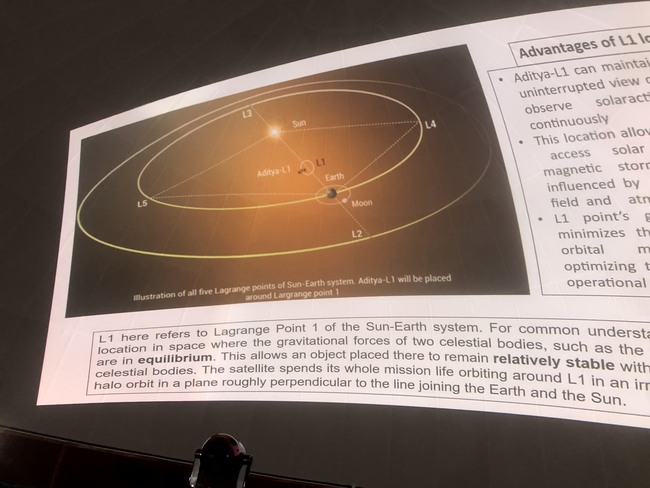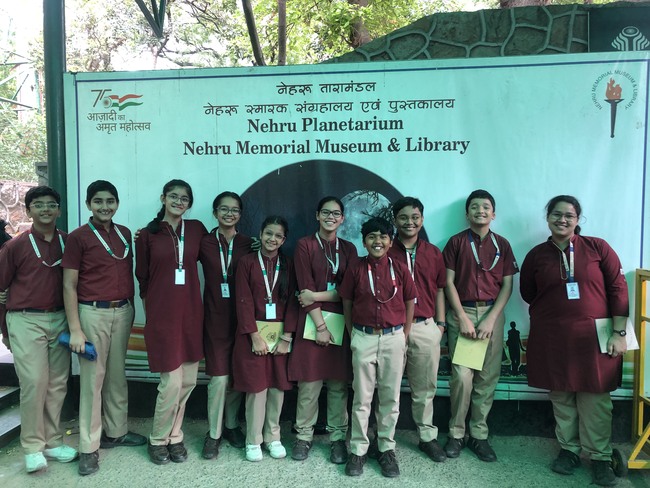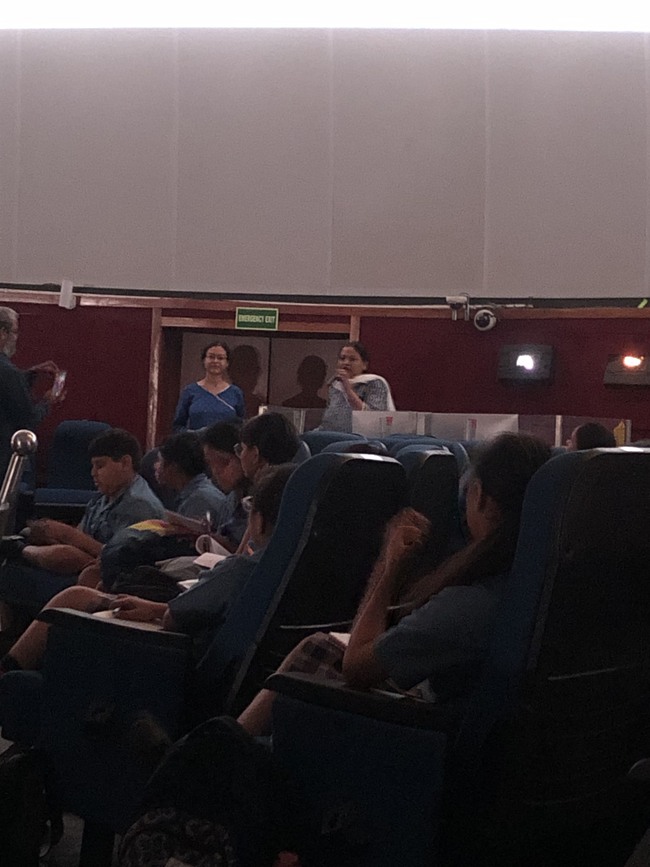Class 8 attends workshop on the solar eclipse
An event based on the Sun, held at Nehru Planetarium was attended by 10 students of class 8. It began with a captivating 3D biographical presentation on the universe, transporting the audience through the vast expanse of space and time. Following this awe-inspiring introduction, Dr Kamalika Banerjee, scientist, educator, innovator, and mentor at Niti Aayog commenced her talk by posing a thought-provoking question, "Who has observed a total solar eclipse?"
A hush fell over the room as the students contemplated upon the question. Dr Banerjee then skilfully segued into the topic of Aditya L1, sparking curiosity amongst the students. She inquired, "What is L1?"
As the students pondered, Dr Banerjee elucidated that L1 refers to Lagrange Point 1, a unique point in space where the gravitational forces of the Sun and Earth counterbalance each other. This strategic position allows spacecraft stationed at L1 to maintain a near-constant view of the Sun, unobstructed by Earth.
Dr Banerjee delved deeper into the Sun's atmosphere, explaining the significance of the corona layer. She emphasised the importance of studying the corona, as disturbances within this layer can disrupt Earth's telecommunication systems. The discussion further explored sunspots, intriguing blemishes on the Sun's surface.
A key takeaway from Dr Banerjee's talk was the revelation that the corona layer and its composition can only be comprehensively observed during a total solar eclipse. This critical information highlighted the importance of these celestial events in furthering our understanding of the Sun.
The session concluded with a lively Q&A session, where students enthusiastically posed questions to Dr Banerjee, demonstrating their newfound fascination with the Sun and its mysteries. The visit to the Nehru Planetarium, enriched by the engaging talk, served as an inspiring introduction to the wonders of our solar system.















